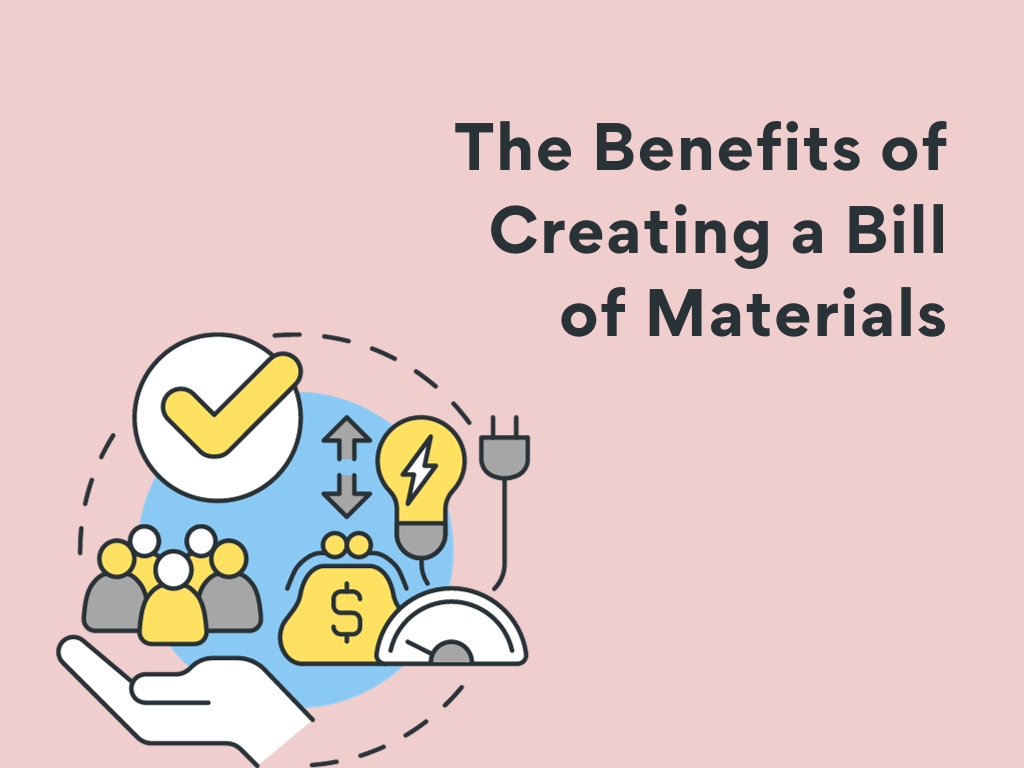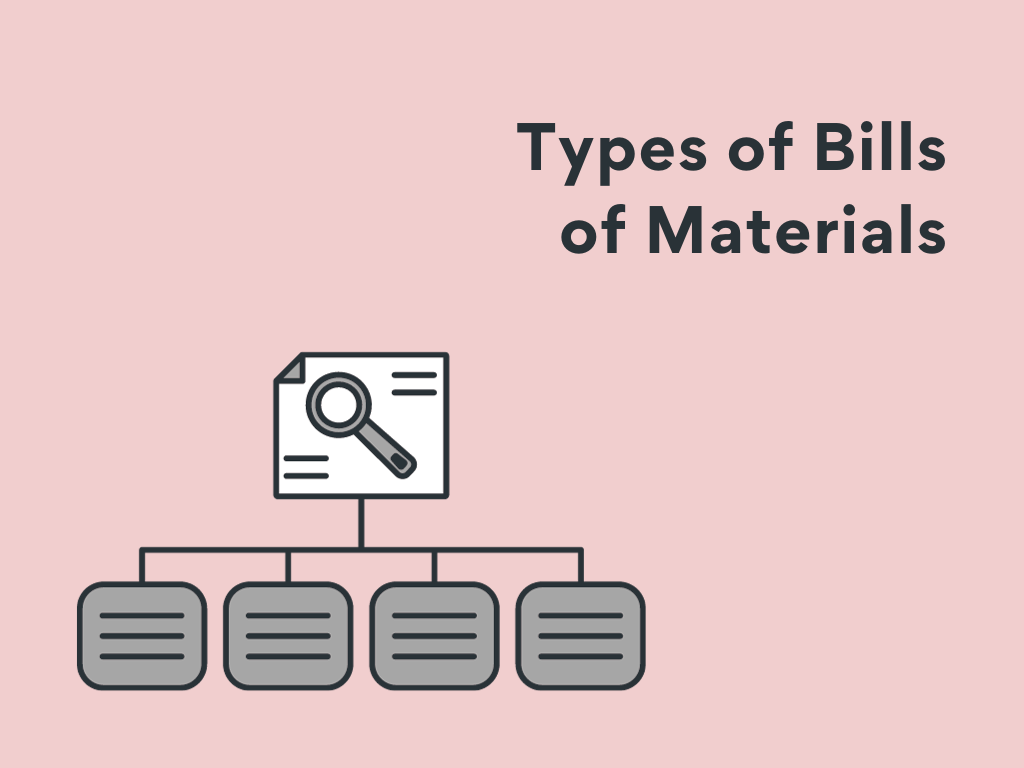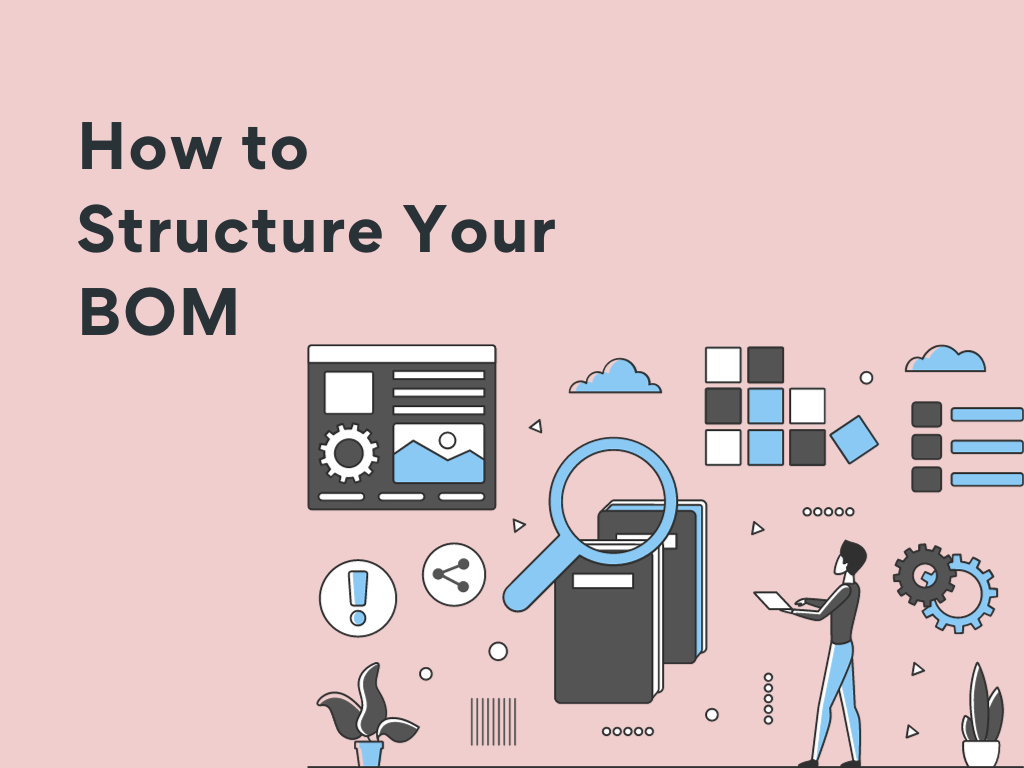Table of Contents:
- What Is a Bill of Materials (BOM)?
- The Benefits of Creating a Bill of Materials
- Types of Bills of Materials
- How to Structure Your BOM
- Steps to Create a Bill of Materials for Your Business
Introduction
As a manufacturer, you are likely well aware of the importance of efficiency and optimization. One of the most critical tools for streamlining your operations and maximizing productivity is the bill of materials or BOM.
The BOM provides a complete, structured list of all the raw materials, sub-assemblies, intermediate assemblies, sub-components, parts, and the quantities of each needed to produce one unit of a finished product.
Implementing a well-designed BOM brings significant advantages to any manufacturing organization. It gives you full visibility into the materials required for production so you can accurately forecast needs and ensure you have adequate inventory on hand.
The BOM also facilitates communication between engineering, purchasing, production, and other departments, reducing errors and keeping everyone on the same page about what is required to make each product.
In short, the BOM is the foundation for efficient manufacturing, helping you gain control, cut costs, and optimize your production process.
This article will explore the BOM in depth, providing an overview of what it is, the major benefits it offers, the different types and structures to choose from, and how to develop an effective BOM for your unique needs.
With the right BOM in place, you'll be well on your way to a streamlined manufacturing operation.
What Is a Bill of Materials (BOM)?
A bill of materials (BOM) is a comprehensive list of all the raw materials, assemblies, subassemblies, components, and parts required to produce a finished product.
Essentially, it's a recipe or a detailed list of all the components and parts required to build a specific finished product.
BOMs are extensively used in manufacturing and are critical documents for manufacturing and engineering projects, significantly aiding in maintaining efficiency and control over the production process.
The BOM not only includes information about the physical parts but also annotations and notes providing guidance about how to assemble the product or specific elements within the product.
Under some circumstances, a BOM may also contain information regarding the product's lifecycle stages, such as the specifications of its components or instructions for their use.
Different types of BOMs are used, including single-level BOMs that depict the assembly or sub-assembly of a product, multi-level BOMs that show a detailed breakdown of components and raw materials, and configurable BOMs that provide a flexible model for manufacturing customizable products.
Having an accurate and up-to-date BOM is essential for efficient manufacturing operations.
Without it, the process of creating complex products would be significantly less accurate and far more challenging.
The Benefits of Creating a Bill of Materials

Creating a bill of materials (BOM) for your manufacturing process provides many benefits.
A BOM is a comprehensive list of all the raw materials, sub-assemblies, intermediate assemblies, sub-components, parts, and the quantities of each needed to produce one unit of a finished product.
Reduced Errors and Increased Efficiency
An accurate BOM eliminates guessing and prevents errors, ensuring you have all necessary parts on hand when needed.
It also allows for efficient purchasing, scheduling, and production planning. Forecasting demand and timing the arrival of materials minimizes work stoppages.
Streamlined Communication
A BOM provides a common framework for discussing the product across departments. All teams reference the same information, facilitating collaboration and problem-solving.
New employees can get up to speed quickly by reviewing the BOM.
Simplified Cost Analysis
With a complete BOM, you know the exact materials and quantities required for each product, enabling precise cost analyzes and price estimates.
You can also compare alternative materials to optimize costs while maintaining quality.
Improved Compliance
A BOM documents all components, ensuring full compliance with industry regulations and quality standards.
You have an auditable record of materials used for each product in case of questions or product issues.
In summary, a well-designed BOM is essential for an efficient, cost-effective manufacturing operation.
By streamlining communication, reducing errors, simplifying costing, and ensuring compliance, a BOM provides significant benefits that ultimately improve productivity and boost your bottom line.
Types of Bills of Materials

There are several types of BOMs used for different purposes in the manufacturing process.
The two most common types are:
- Manufacturing BOM: Lists all parts needed to physically assemble a product. It includes raw materials, subassemblies, and components.
- Engineering BOM: Provides an overview of all parts in a product at various levels of the assembly. It describes the product structure and hierarchy but omits quantities. An engineering BOM is useful for product design, development, and documentation.
An engineering BOM, or EBOM, defines the product from an engineering design perspective. It specifies the parts, assemblies, and subassemblies required to make the product and how they relate to each other.
EBOMs are created early in the product design phase and are used by engineers to design the manufacturing processes.
A manufacturing BOM, or MBOM, represents the product from a manufacturing perspective. It defines the parts, materials, and components required to physically assemble the product.
MBOMs are derived from EBOMs but provide more details required for procurement and production such as part numbers, quantities, and materials.
MBOMs are used on the shop floor to assemble the product.
Some companies also use additional BOM types like sales BOMs, which define products from a sales and marketing view, and service BOMs, which define spare parts and assemblies required to repair and maintain the product.
The specific types of BOMs a company uses depends on their products and business processes.
The key is to have a well-structured bill of materials that provides a complete and up-to-date picture of your product at each stage of its lifecycle.
Keeping your BOMs synced and aligned from engineering to manufacturing to sales will help streamline your operations and avoid errors and inefficiencies.
Utilizing a robust product data management (PDM) or product lifecycle management (PLM) solution can help you efficiently create, manage, and distribute your BOMs across the enterprise.
This helps ensure all teams are working from a single source of truth for product data.
How to Structure Your BOM

A well-structured BOM will provide an organized, efficient overview of your product. To create an effective BOM, consider the following:
- Focus on the end product. List components in the sequence they are assembled. This helps ensure all parts are accounted for and ordered properly.
- Use a hierarchical structure. Group low-level parts into higher-level assemblies to keep the BOM concise and easy to navigate. The top level should be your end product. Lower levels contain subassemblies and individual components.
- Include all necessary details. For each part, list its reference designator, part number, revision level, quantity, and unit of measure. You may also want to include cost, manufacturer information, and lead times.
- Use consistent formatting. Establish standards for part numbering, indenting, and the order and presentation of information. This uniformity makes the BOM simpler to read and reference.
- Leave room for edits. A BOM is a living document. Choose a format, like a spreadsheet, that allows for easy updating as parts change, improve, or are substituted.
- Cross-reference related documents. Link the BOM to product drawings, specifications, vendor information, and any other related documentation. This provides critical context for production.
- Review and approve. Have colleagues double check the BOM to confirm all parts are included, the structure is logical, and the necessary details are present. Get official sign-off before using the BOM.
A comprehensive, well-structured BOM is essential for efficient manufacturing. By following these best practices, you can create a BOM that streamlines your production process and helps avoid errors or delays.
Be sure to periodically review and revise your BOM to keep it up to date with the latest product information.
Steps to Create a Bill of Materials for Your Business

To create an effective bill of materials (BOM) for your business, follow these steps:
Gather product information
Compile details about each product component, including part numbers, descriptions, and quantities. Obtain specifications, pricing, and sourcing information for all parts.
Determine BOM structure
Decide how you want to organize your BOM. Common structures include:
- Hierarchical - Arranges parts in a tree structure showing the parent-child relationships. Useful for complex products.
- Flat - A simple list of all parts with no designated hierarchy. Suitable for less complex products.
- Modular - Groups related parts together under modules, with each module representing a sub-assembly. Helps break down complex products into more manageable units.
Specify part relationships
Identify the links between parts to understand how they interconnect. This includes specifying the quantity of each part needed to make a single unit of the product. Define the sequence parts must be assembled in.
Include additional details
Add columns for part numbers, descriptions, quantities, unit costs, suppliers, and other attributes like weight, dimensions or specifications. This provides a comprehensive overview of the product in a single document.
Review and approve
Have colleagues double-check the BOM to confirm all information is correct before approving. Make any necessary revisions.
Distribute BOM
Share the approved BOM with all relevant teams like purchasing, engineering, production, and quality assurance. This helps ensure a common understanding of the product requirements across the organization.
BOMs provide the foundation for efficient manufacturing by giving a detailed breakdown of product components. These steps will help you create a comprehensive BOM to streamline your operations.
Conclusion
As you have learned, a bill of materials is essential for optimizing your manufacturing operations. By implementing a well-designed BOM, you gain complete visibility into your production processes, ensure high-quality standards, and reduce waste.
The time invested in creating a thoughtful bill of materials will pay dividends through cost savings and efficiency gains for years to come.
Whether you choose a single-level or multi-level BOM, include all necessary components - from raw materials to subassemblies to finished goods.
With an accurate and up-to-date BOM, you have a tool that integrates your supply chain, simplifies procurement, and facilitates assembly.
By making data-driven decisions supported by your bill of materials, you will accelerate growth, boost customer satisfaction, and gain a competitive advantage.
The benefits of a BOM are many - you just have to take the first step. Start streamlining your manufacturing process today with a bill of materials.








